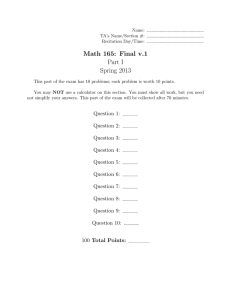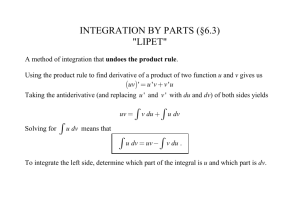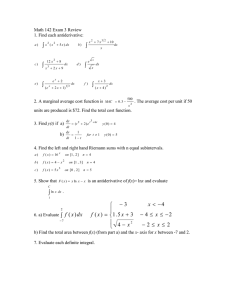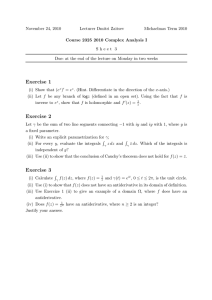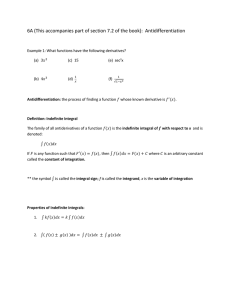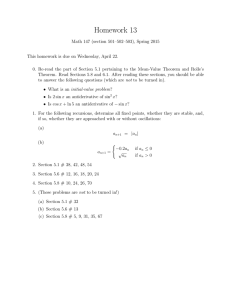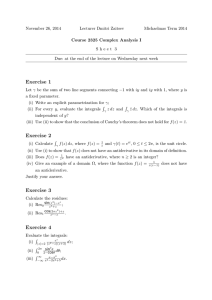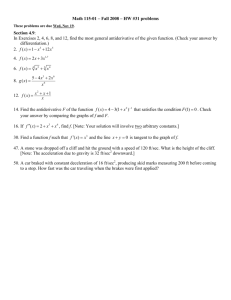Today, we’re going to introduce a topic that’s important in... antiderivatives. The basic goal is this: we have a function...
advertisement
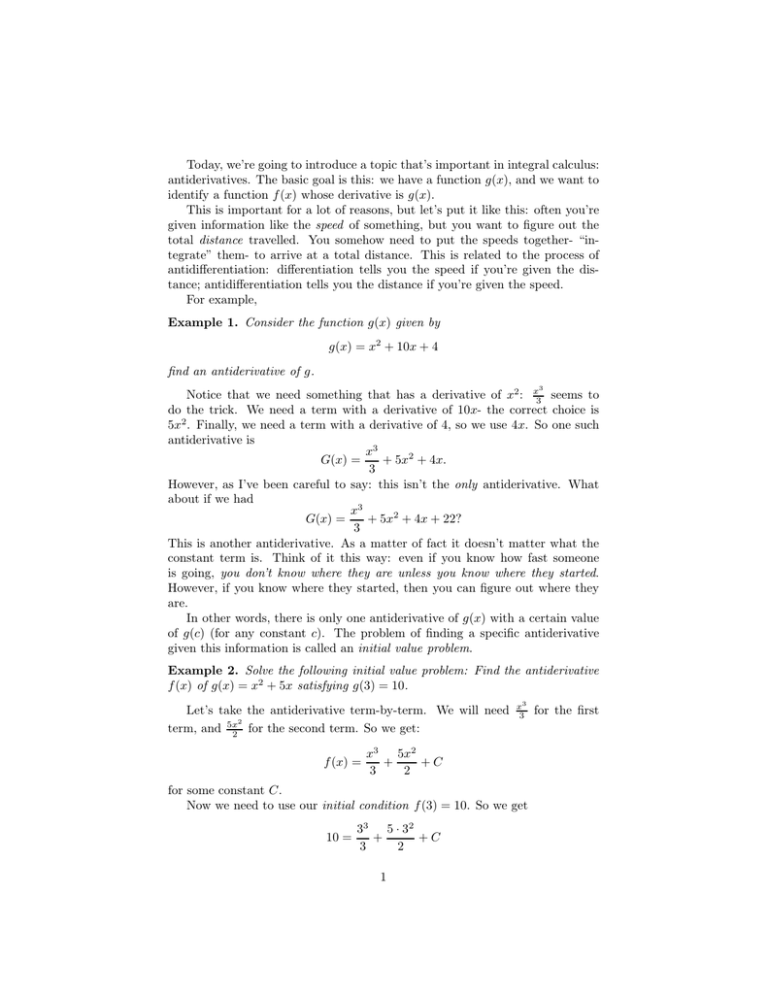
Today, we’re going to introduce a topic that’s important in integral calculus: antiderivatives. The basic goal is this: we have a function g(x), and we want to identify a function f (x) whose derivative is g(x). This is important for a lot of reasons, but let’s put it like this: often you’re given information like the speed of something, but you want to figure out the total distance travelled. You somehow need to put the speeds together- “integrate” them- to arrive at a total distance. This is related to the process of antidifferentiation: differentiation tells you the speed if you’re given the distance; antidifferentiation tells you the distance if you’re given the speed. For example, Example 1. Consider the function g(x) given by g(x) = x2 + 10x + 4 find an antiderivative of g. 3 Notice that we need something that has a derivative of x2 : x3 seems to do the trick. We need a term with a derivative of 10x- the correct choice is 5x2 . Finally, we need a term with a derivative of 4, so we use 4x. So one such antiderivative is x3 + 5x2 + 4x. G(x) = 3 However, as I’ve been careful to say: this isn’t the only antiderivative. What about if we had x3 G(x) = + 5x2 + 4x + 22? 3 This is another antiderivative. As a matter of fact it doesn’t matter what the constant term is. Think of it this way: even if you know how fast someone is going, you don’t know where they are unless you know where they started. However, if you know where they started, then you can figure out where they are. In other words, there is only one antiderivative of g(x) with a certain value of g(c) (for any constant c). The problem of finding a specific antiderivative given this information is called an initial value problem. Example 2. Solve the following initial value problem: Find the antiderivative f (x) of g(x) = x2 + 5x satisfying g(3) = 10. Let’s take the antiderivative term-by-term. We will need 2 term, and 5x2 for the second term. So we get: f (x) = x3 3 x3 5x2 + +C 3 2 for some constant C. Now we need to use our initial condition f (3) = 10. So we get 10 = 33 5 · 32 + +C 3 2 1 for the first so 10 = 9 + so C= 45 +C 2 −43 2 and we get 5x2 43 x3 + − . 3 2 2 One common type of problem in physics involves initial value problems involving a second derivative. These initial value problems require two conditions to solve. f (x) = Example 3. A ball is thrown upwards from a height of 1 meter with an initial speed of 3 m s . Find the function describing the height of the ball, and determine when the ball hits the ground. You may use −9.8m/s2 as the acceleration due to gravity. If s(t) is the position, we have that the acceleration is s′′ (t). So s′′ (t) = −9.8. We now take an antiderivative to find the velocity, s′ : s′ (t) = −9.8t + v0 where v0 Plugging in the time t = 0 and using the fact that the initial velocity is 3 m s gives 3 = 0 + v0 so v0 = 3. We therefore get s′ (t) = −9.8t + 3. And we antidifferentiate once more: s(t) = −4.9t2 + 3t + s0 and we plug in s(0) = 1: 1 = 0 + 0 + s0 so s0 = 1. We therefore get the equation s(t) = −4.9t2 + 3t + 1. We wanted to figure out when the ball hit the ground, so we set s(t) = 0: 0 = −4.9t2 + 3t + 1 and we get √ 9 + 17.6 9.8 we want to use the positive square root in order to make the time positive: √ −3 + 26.6 9.8 −3 ± 2
